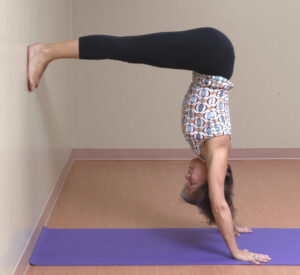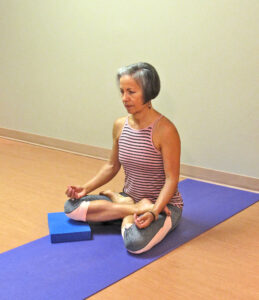For millennia, yogis practised asanas (poses) as well as breath regulation (pranayama) for whole-being wellness. As mind-body-spirit beings, humans are more complex entities than merely a physical body or a collection of emotions and thoughts. Nonetheless, western medical practices still traditionally focus on the science behind the physical aspect of our being, thereby segmenting the psycho-social to psychiatry, psychology and/or religion. Furthermore, scientific inquiry focuses on observable facts, which means we have to be sick already in order for any symptoms to be observed, studied and diagnosed. Over time, segmentation and scientific inquiry evolved western medicine into a pharmacological approach to symptomatic illness not a preventative approach to whole-person wellness.
Arguably, this is a strong statement about the state of western medicine in general, which I believe is one reason why yoga has entered mainstream global consciousness as a wellness practice. This awakening of the western world to asana and pranayama breath practices has also been due to our current healthcare systems’ inability to adapt to emerging societal requirements. From personal experience, we all know that monolithic structures, such as healthcare, education, religion and government systems, are highly resistant to innovation and change. With longer and longer waits to see medical specialists, individuals have opted to seek other sources to support their wellness journey. As someone who conquered both depression and anxiety through a regular yoga practice begun in 2001, I am one of those people who now tends to access traditional medicine as a last resort.
Since 2001, I continue to see evidence supporting the intuition that led me to yoga. As a first “factoid” that emerged back then, I recall a fellow journeyer confiding about her depressed husband having seen his therapist for 15 years, and he was still depressed; medicated, but depressed. Without going into details, this is all wrong; wrong to be in therapy for 15 years without results and wrong to be on an anti-depressant for almost as long.
The more we learn about antidepressants, the more insidiously dangerous and even deadly we know them to be. Too often, drug companies and even doctors conceal the dangers from patients until they’re hooked or, even worse, until a fatal result occurs.
For example, pharmaceutical giant Glaxo Smith Klein tampered with research proving that their antidepressant Paxil increases suicide risk in adults. Joyce Hollman
Given the meteoric rise of depression and anxiety into the primary global health care concern, psychotherapy and antidepressants have not been able to keep pace. As recent as 2017, researchers including Patricia Gerbarg and husband Richard Brown — clinical professor of psychiatry at New York Medical College and associate professor of clinical psychiatry at Columbia University College of Physicians and Surgeons, respectively — took a different tack.
… 30 people with major depressive disorder were given a regime of resonant breathing and Iyengar yoga to follow for three months. At the end of that period, the depressive symptoms in the participants had drastically dropped, as measured by a standard depression inventory test.
Essentially, Gerbarg and her research team were looking for an intervention that in five or ten minutes (not 15 years) brings relief. They consider this breath awareness “technique powerful enough to help patients with even the most severe mental conditions: survivors of genocides, wars, earthquakes, tsunamis, and other mass disasters.“
Here’s how you can do it right now. Close your eyes and take your awareness to your breath. Just watch each inhale and exhale as it enters and exits through your nostrils (not your mouth). The intention of resonant breathing is to breathe 5 breaths per minute, which amounts to a six-count for each inhale and each exhale. In yoga, we teach that one breath cycle is one inhale plus one exhale. Your inhales and exhales will be deeper, gentle, not forced, and without pauses between. To help measure your number of breaths per minute, set a timer for one minute and begin counting. Once you have established your 5-breath rhythm, set your timer for 5 or 10 minutes and continue with the breath technique. Notice at the end of your experiment what changes or impacts are evident within you.
As support for your self-inquiry, breath regulation or pranayama practice has several proven benefits. Its purifying nature
• improves blood circulation
• decreases heart problems and hypertension
• relaxes body and mind
• betters concentration
• releases stress, depression and anxiety
• eases asthma, headache, migraine symptoms
• builds self-confidence
So, breathe with awareness and be well.





